The Rosetta Stone in the British museum.
If you have visited the British Museum in London, you will have seen this stone. It is one of the most important discoveries in modern times, allowing us to unlock 3000 years of Egyptian history.
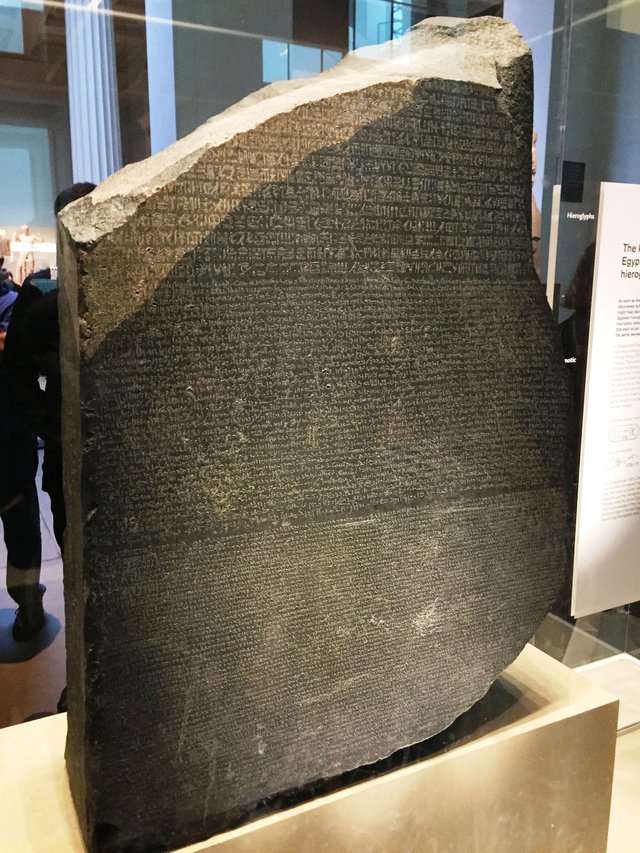
For 1500 years from the last Hieroglyphs made in 394AD to 1814, no one had been able to decipher them.
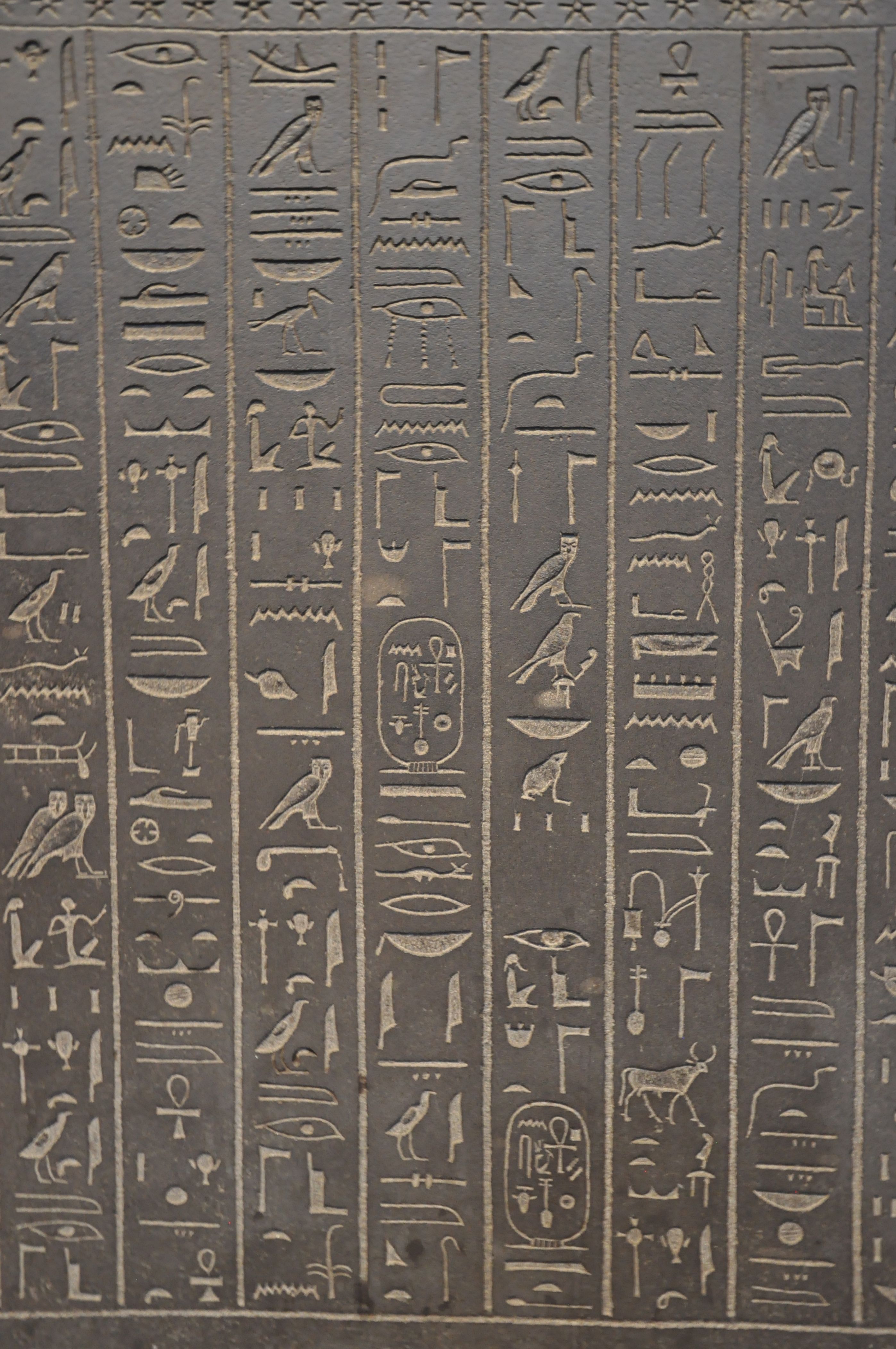
The hieroglyphs ran without change for 3000 years. Unlike all other written languages, it was not developed or changed due to its belief in being a Gift from God. Its use was not for general communication, but to instill magical powers from the gods into whatever it was written on, temples, tombs, jewellery and into books.
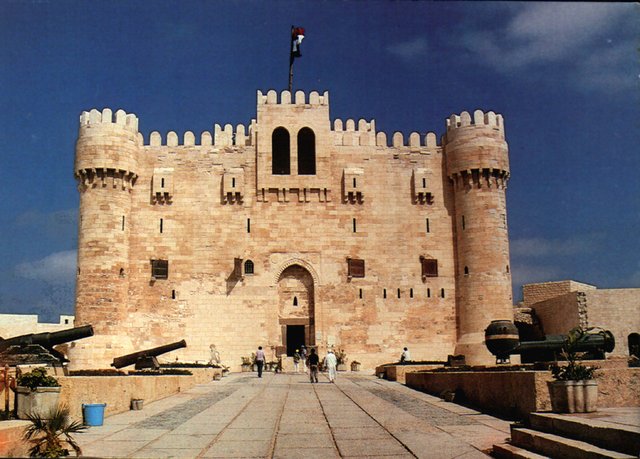
The Rosetta stone was discovered in 1799 by Captain Pierre Bouchard, an engineer re-building a fort at Rosetta in Egypt, following Napoleon’s invasion in 1798. The stone was moved to Cairo but when Egypt was taken by the British, it became part of the British prize.
The stone is the key to deciphering hieroglyphs due to being written in two languages, Egyptian Hieroglyphs and Ancient Greek. It is also written in three forms, Hieroglyphic, Demonic (the language of general Egyptians) and Greek.
Ancient Greek was studied by most educated people at that time and so was easy to read. It was not until 1814 when a British enthusiast, Thomas Young managed to work out several letters. Foreign names like Ptolemy, the ruler at the time, contained just letters.
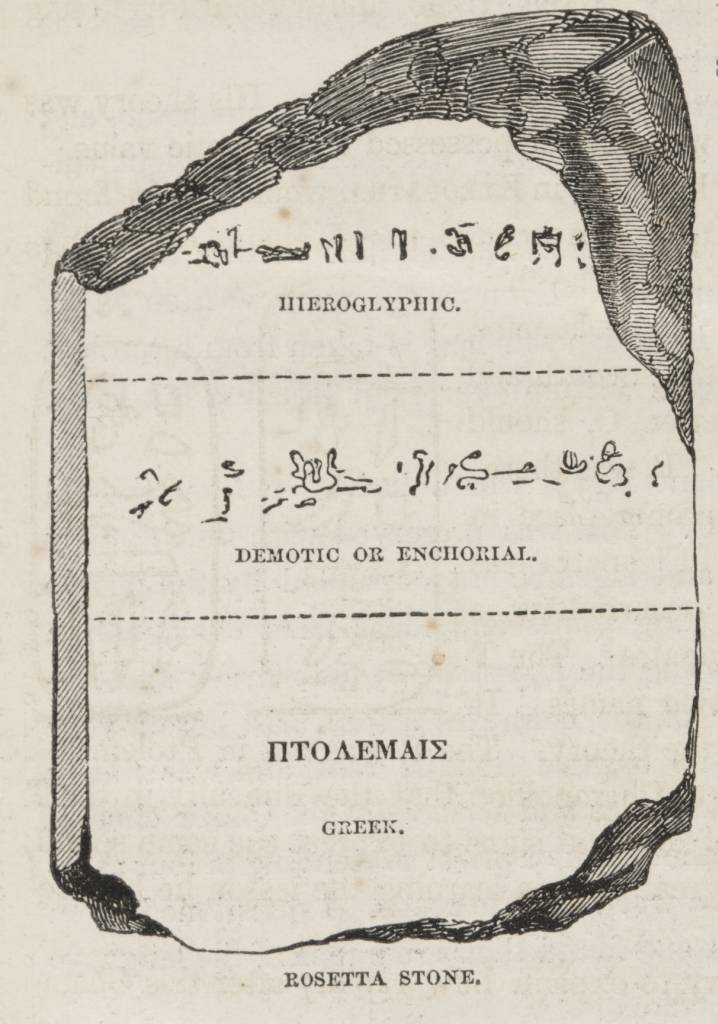
Thomas Young and others thought each symbol represented a letter but it was not until 1822 when a French man, Jean-Francois Champollion worked out that the symbols could not only be a letter, but also the sound of a word, and also even a complete word. He was an Egyptologist and linguist able to read the Coptic language used in Egypt. Hieroglyphs do not use vowels and their sounds are not easy to work out. When put alongside the Coptic alphabet which uses a Greek style alphabet with vowels, better understanding of the hieroglyphs could be interpreted.
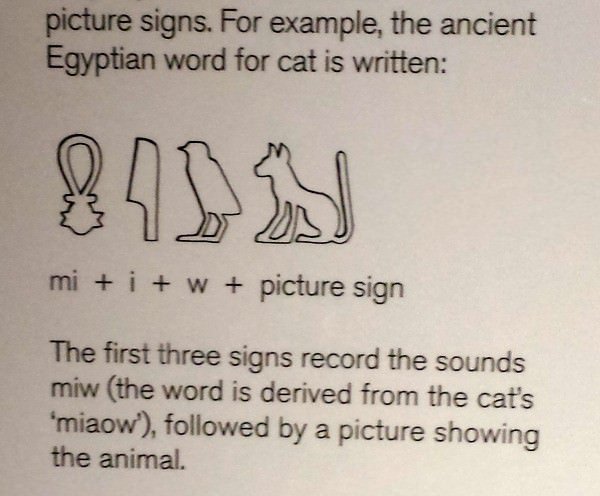
These three symbols translate to sound the word for cat. If you read the sounds out loud it sounds out Meow.
Hieroglyphs can be read left to right or right to left, but always start at the top. All animals and people in the symbols always point toward the side to read from. They point left if you read left to right.
Hieroglyphic signs are divided into four categories:
- Alphabetic signs represent a single sound.
- Syllabic signs giving a combination of two or three consonants.
- Word-signs are pictures of objects and are followed by an upright stroke, to indicate that the word is complete.
- Sometimes a picture of a roll of papyrus tied up and sealed was included to show that the meaning of the word could be expressed in writing although not pictorially.
The stone was, for many years, thought to be made of black basalt but it was actually covered in a wax and due to being on display for many years and touched by millions of people, it was also covered in finger grease. When cleaned in 2004 and put onto its new display behind glass and the right way up (it had always been stood on its top) it was found to be made of grey granite.
Everything we know about the Ancient Egyptians is due to this find.
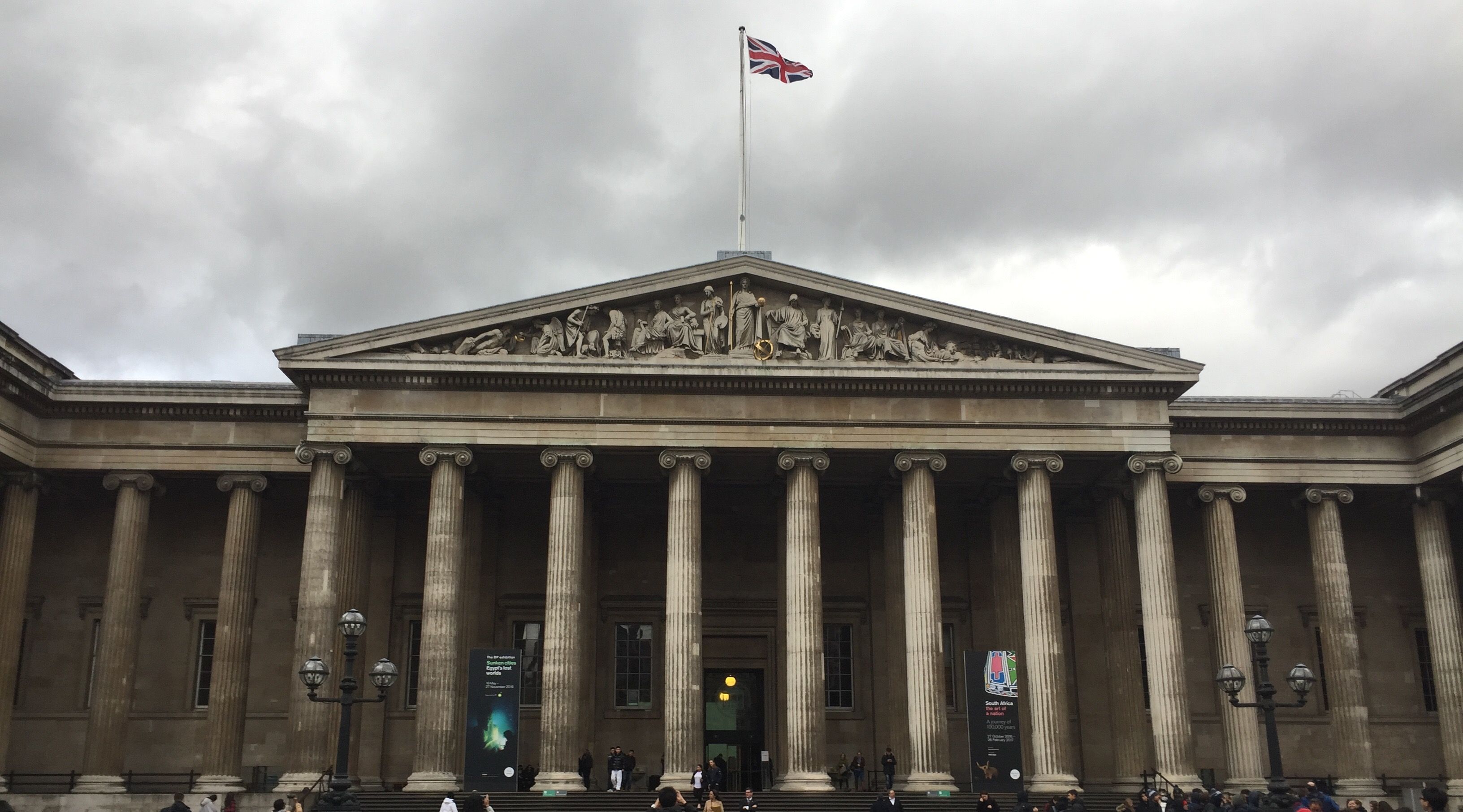
So if you are visiting London this should be one thing you must see. It’s also FREE.
Images are either my own or free use from google
upvoted and resteemed
It is a good luck of the Egyptian civilization is to discovery a Rosetta Stone in 1799 m, that Stone combines two languages, Egyptian Hieroglyphs and Ancient Greek....
Before the discovery of this stone, the Egyptian civilization was vague and we know nothing about it; Because we can't read the writings of the ancient Egyptians
thank you @s0u1
Thanks for reading. These type of stones are found from time to time but not with the three forms of writing which allowed this one to be the key to the past. The Egyptian hieroglyphics staying the same for 3000 years also helped.
Thank you for this piece - I was just watching a clip about deciphering the Voynich Manuscript, so finding an article about the Rosetta Stone was timely! Will follow you...
The Voynich Manuscript looks interesting and I will take a closer look at it. I must say I am not great at deciphering things and with the Rosetta Stone the history was my driving interest.
I visited London and this was definitely one of the highlights.
I'm a history buff and so the single thing I enjoyed the most about the trip was visiting the National Museum of History.
The Museum wasn't crowded at all and it was full of historical artifacts and exhibits that I never even dreamed seeing.
I saw the Rosetta stone and was in awe. My girlfriend didn't care about it at all, for her it was just a stone...but for me it was worth the trip... to have that moment.
Cheers. Upvoted!
The contents of our museums are all interesting to me. I love history. It’s not for everyone though.
I like how the Rosetta Stone is used in other stories - Dan Brown (I believe) used the Rosetta Stone in The Da Vinci Code - or at least the Rosicrucians - is that the same thing?
As a magical device to translate languages, it would work very well, I think.
check my blog for more images from the birtish museum. upvoted also great post, however i do not believe the Hieroglyphs have been deciphered as there ideograms and if you were not there at the time to ask the person what it meant theres no way to find out, unless you unlock it through your dna but thats a whole another topic
Like you said this ancient language is used to encrypt magical words so it means this stone might contain some ancient magical words, has the inscription on the stone been sorted out ??
Such a fortunate find. Imagine how little we would know if not for this stone! Nice read!